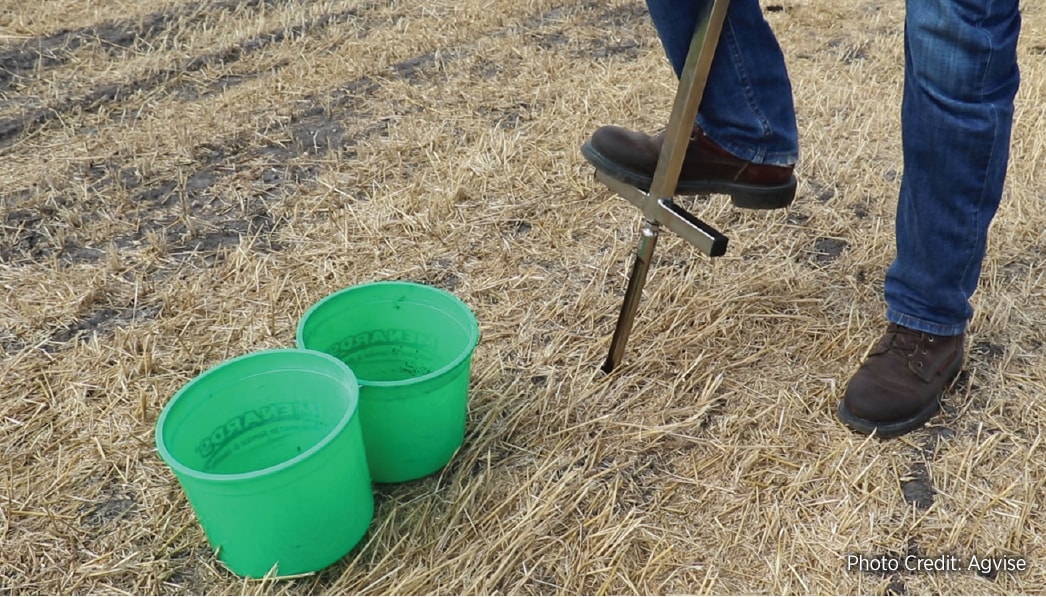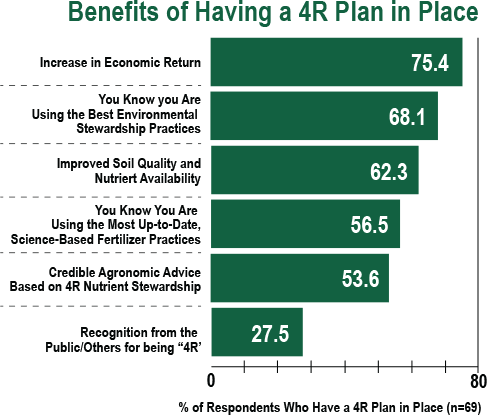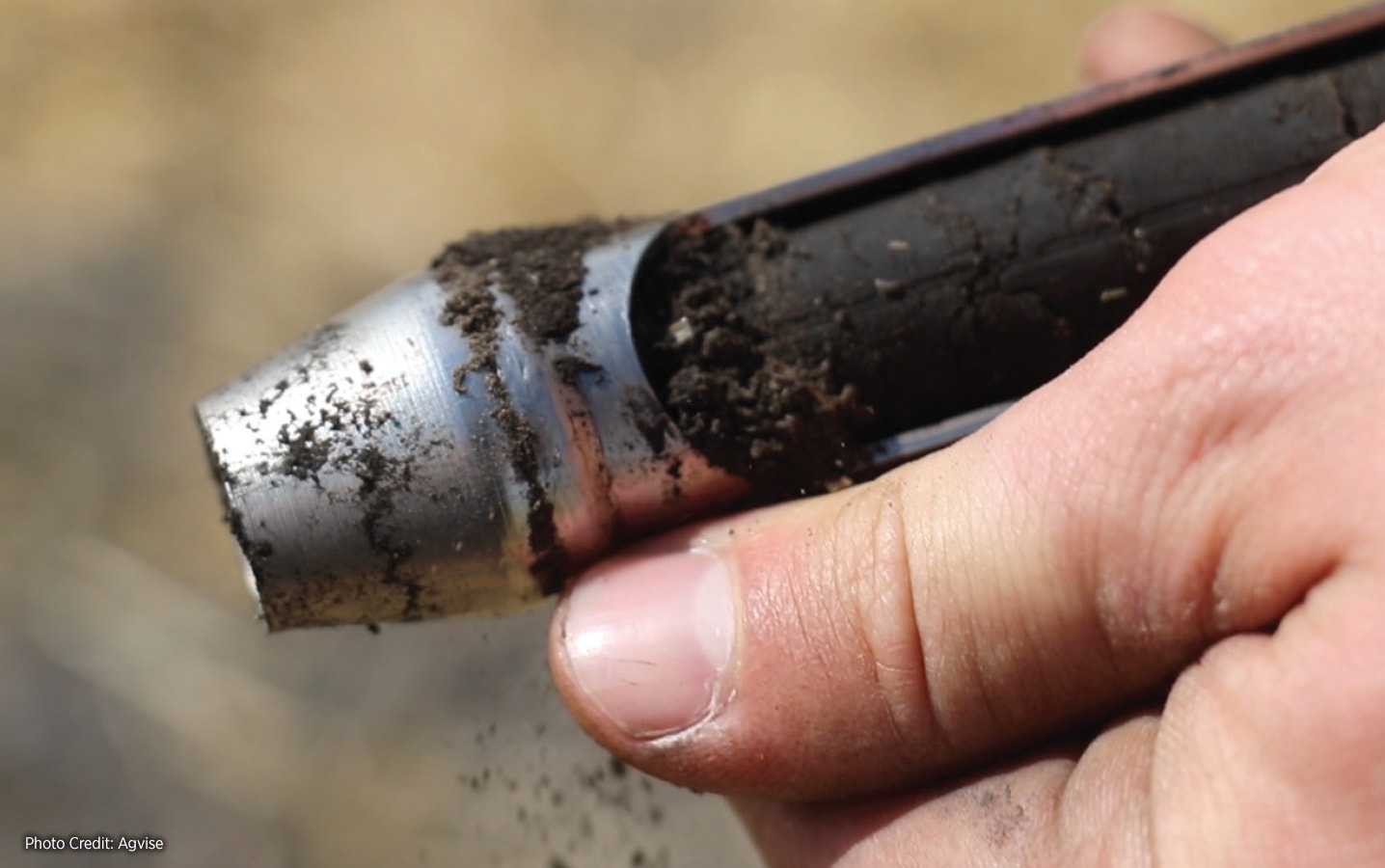Simple 4R Tips to Improve Profitability
In its Fertilizer Use Survey of Canadian farmers, Fertilizer Canada found that those farmers who have a 4R plan in place say the biggest benefit was an “increase in economic return” for nutrient inputs.
Interestingly, in the same survey, those farmers who know about 4R but haven’t put together a 4R plan say the number one limitation is cost. For them, the anticipated increase in labour, time or equipment required for 4R just don’t seem worth it.
4R Nutrient Stewardship, which is based on the trademark slogan “Right Source @ the Right Rate, Right Time, Right Place”, does start with a few basic practices that will require some investment in time and money. (See Table 1 for basic practices from the 4R Guidance Document for nitrogen management.) The 4R Guidance Document outlines basic, intermediate and advanced 4R practices for oilseed, pulse and spring cereal rotations on the Prairies.

Practices that would require investment are setting crop and field specific nitrogen rates using appropriate regional tools such as nitrate soil tests, nitrogen balance, response curves or provisional guidelines, and accessing the tools for subsurface placement. Setting nitrogen rates specific to the needs of each individual field, which is a basic requirement within the 4R Guidance Document, will require some extra planning and perhaps more complication when it comes to fertilizer blending.
As noted, the soil test is another cost to reach this extra level of management, but the Fertilizer Use Survey shows a strong relationship between soil tests and overall yield.
“The Fertilizer Use Survey indicates that growers with higher yields tend to soil test more,” says McKenzie Smith, director of stewardship and regulatory affairs at Fertilizer Canada. “Additionally, it shows that growers with higher yields also consider field variations and use a trusted advisor to interpret soil samples and translate this information into a nutrient management plan.”
In the analysis of survey results, canola farmers are divided into high yield (over 55 bu./ac.), moderate yield (40 to 55 bu./ac.) and low yield (less than 40 bu./ac.) groups. The survey found that 50.6 per cent of high-yield growers soil test for nitrogen every year. That compares to 29.5 per cent for moderate-yield farmers and 24.4 per cent for low-yield growers. The soil tests are an indicator of a higher level of management overall, and this often goes hand in hand with higher yields.
The survey also found that high-yield growers tend to be more familiar with 4R programming and are more likely to work with a 4R designated agronomist.
Fertilizer Canada is working closely with companies who see value in training their agronomists and encouraging 4R among their farmer customers. Western Canadian agri-retailers who have committed to the 4R Designation program are listed at fertilizercanada.ca in the “What’s in it 4R me?” under the Nutrient Stewardship tab.
Warren Ward is an agronomy specialist with the Canola Council of Canada (CCC) and team lead on the fertilizer file. Part of his job is to encourage 4R as a way to improve profitability of the crop and nutrient use efficiency, especially for nitrogen and phosphorus. One of the Canola Council’s sustainability targets is to have 90 per cent of canola production acres implementing 4R nutrient stewardship practices by 2025.
“Ultimately, the CCC wants to increase awareness about 4R and encourage farmers to adopt these practices voluntarily, which is pretty easy for a farmer to do,” Ward says. “This is better than having guidelines forced upon them by regulations.”
Suites of 4R Nitrogen Management Practices
Here are the basic 4R practices for nitrogen management for spring cereal, oilseed and pulse rotations on the Canadian Prairies.
Level:
Basic
Right Source
- Ammonium-based formulations for fall (UAN excluded due to nitrate content).
- Any N fertilizer in spring or in-season.
- Inoculate pulse crops. Exception: Not required for dry beans which are typically fertilized.
Right Rate
- Set crop and field specific N rates using appropriate regional tools such as nitrate soil tests (surface and subsurface sampling recommended) nitrogen balance, response curves or provincial guidelines.
- Consider field specific yield history and soil types in relation to yield potential of other fields on farm and in region, and probabilities for weather variations when setting rates
Right Time
- Apply N after soil cools in fall; or
- Apply N in spring before or at seeding.
- No N application on frozen soil and/or snow covered ground.
Right Place
- Apply in subsurface bands/ injection any acceptable time.
- Broadcast and incorporate in spring.
- Avoid fall broadcast of unprotected N.
- Fall broadcast of enhanced efficiency N fertilizers are acceptable following label instructions regarding incorporation and timing.
- Fall broadcast N applied as MAP or DAP with incorporation is acceptable.
Suites of 4R Phosphorus Management Practices
Here are the basic 4R practices for phosphorus management for spring cereal, oilseed and pulse rotations on the Canadian Prairies.
Level:
Basic
Right Source
- Use P fertilizer with guaranteed analysis.
Right Rate
- Use recent soil test (three years or less) to establish P baseline.
- Follow provincial guidelines based on soil and crop types to meet sufficiency levels.
- Set field specific rates considering differences in yield potential and soil test values among fields.
- Adopt draw down strategy in fields that test very high in P (approaching or exceeding 60 ppm) by setting rates less than annual crop removal.
Right Time
- Apply P in spring at or before seeding.
- Apply P in fall with incorporation or band or co-band.
Right Place
- Place with seed at safe rates based on crop, seed bed utilization, and total product load.
- Side-band at seeding
- Band or Co-band prior to seeding or mid-row band at seeding (with consideration for mobility issues if banded with high rates of N or in cool soils).
- Surface apply in fields with limited risk of movement to surface waters.
The good news, McKenzie Smith says, is that most canola growers on the Prairies are already following many of the basic principles of 4R – they just don’t know it. The next step is to work with a 4R Designated retailer or agronomist to get your acres counted and be part of building canola’s reputation as a sustainable crop.
For phosphorus, as an example, one of the most important practices is to put phosphorus in a side band, mid-row band or in the seed row at the time of seeding. “Ninety-one per cent of farmers surveyed are already doing that,” Smith says.

Source: Fertilizer Canada

Source: Fertilizer Canada
See the box for the complete list of basic practices for 4R nitrogen and phosphorus management. To take the next step towards counting your acres, find a “4R Designated” agronomist who can outline a plan and sign off on your 4R acres. For farmers who already have an agronomist, they can encourage their agronomist to get 4R Designated. Fertilizer Canada has resources to find a designated agronomist and to get a designation. Look under the 4R Nutrient Stewardship tab at fertilizercanada.ca.





